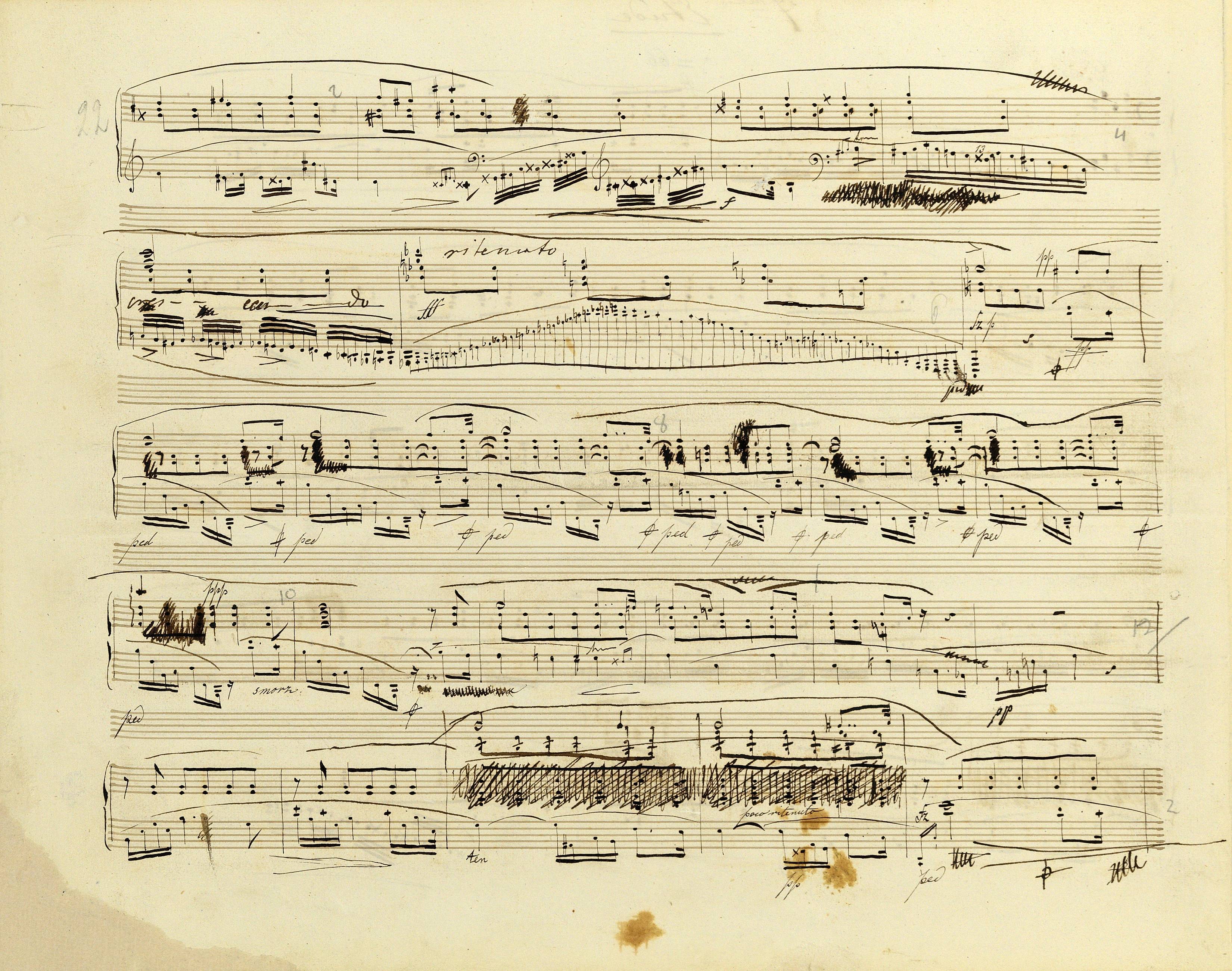



The version of FE with an additional, sustained d 2 (as in analogous bar 34) is probably a result of Chopin's proofreading – a fragment of the stem reaching this note is slightly tilted, which indicates its later addition. When using the authentic pedalling, it has only an ideational meaning. We take this version as the basis of the main text, in which we, however, modify the way of notation after the one Chopin used in bar 35.
2 (as in analogous bar 34) is probably a result of Chopin's proofreading – a fragment of the stem reaching this note is slightly tilted, which indicates its later addition. When using the authentic pedalling, it has only an ideational meaning. We take this version as the basis of the main text, in which we, however, modify the way of notation after the one Chopin used in bar 35.
The notation of the sources is a result of changes in the rhythmic structure of the accompanying part, introduced by Chopin (similarly in bars 32 and 34). Originally – which can be clearly seen in GC – the quaver dyads and chords were always struck, independently from the top voice. Chopin deleted some of the notes then, while he sustained other ones with ties. The process was ended only with proofreading of FE – in this bar (described above) and in bar 32. Generally, Chopin – whenever it was possible – would avoid the notation with ties, trying to write the struck notes only (cf. bar 35, as well as, e.g., the Etude in A minor, No. 4 from bar 9 or the Etude in E major, Op. 10 No. 3, bars 30-31 and 34-35). Due to these reasons, in the main text we suggest the notation with crotchets, modelled after the Chopin one in bar 35.
Compare the passage in the sources »
category imprint: Differences between sources; Editorial revisions; Corrections & alterations; Source & stylistic information
issues: Accompaniment changes, Authentic corrections of FE, Authentic corrections in GC
notation: Rhythm




